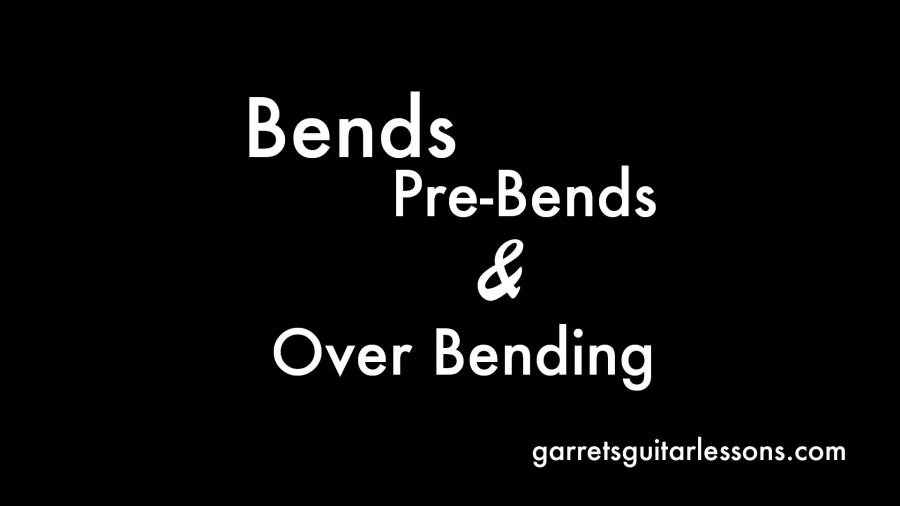Getting to or from a note is one thing that makes the guitar so unique and your choices can really help define your sound. Today I want to talk about 3 types of bends and ways to implement them into our soloing: Bends, Pre-Bends and Over Bending.
What’s important to remember is that when we use any of these types of bends we are aiming for specific notes, most of the time they’re whole step bends (aiming for the note 2 frets away) but I’ll also be talking about half step bends (aiming for the note 1 fret away) as well. We have to hear the bend not just as a cool technique but a way to move between two separate notes, which is why I’ll always start with hitting each note separately then add the bend.
We’ll be using the irresistible E Minor Pentatonic Scale for todays examples:

Being in tune is hard! The best piece of advice on actually executing the bend is to give yourself support fingers. If you’re using your pinky to bend, have your index, middle and ring behind it to help give it some “oomph”. If you’re using your ring finger to bend, have the index and middle behind it to help give it some “oomph”. If you’re using your middle finger to bend have your index behind it. If you’re using your index finger… well good luck as this is one of the tougher ones!
Bends
This is the best place to start, bending up to a specific note. The key to these types of bends are to play the notes separately and then check the intonation (how in tune) your bends are! I often recommend practicing starting with the bends first into notes from the pentatonic then visa versa

Scale into bend:

We can also take a half step before a note and bend into that note of the scale. Even if it’s not in the scale. Reason being is that it’s not where we start, but where we’re bending:


PreBends
This is the next step, the goal here is to not to experience the journey up to the note, rather the journey down. We want to preemptively bend up to our desired note and move our way down to the next note:




Over Bending
Here’s a goofy one that I hear a lot in David Gilmore and Joe Walsh, over bending. This is mostly an effect as opposed to a way to move between notes. I generally think of this as going up three half steps. This one is typically heard going up and down and is generally used as a way to pivot away from the note and go back to the note.


There are other types of bends but I tend to think of these as important things to get under our belt. Take any two notes that you pick together and see how you can bend, prebend or overbend to play around with the melody.

